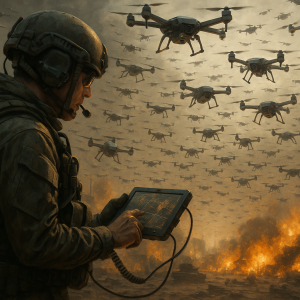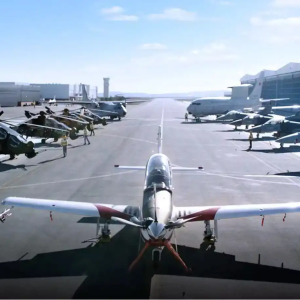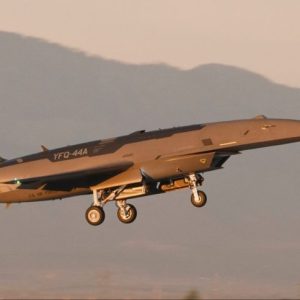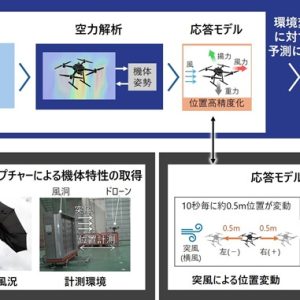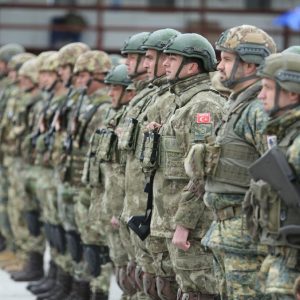AI‑enabled drone control system for uncertain airspace
MIT researchers have demonstrated an AI‑enabled drone control system that stays on target amid gusty winds and corrupted sensor inputs, a capability tailor‑made for GPS‑denied and electromagnetically contested missions. Why it matters: adaptive control at the tactical edge closes the loop between autonomy and survivability, directly impacting defence, aerospace and military operations from maritime ISR to urban counter‑UAS. [1]
Key Facts
- Publication date: 9 June 2025 (MIT News) [1]
- Method: Meta‑learning + automated mirror‑descent adaptation (paper: “Meta‑Learning for Adaptive Control with Automated Mirror Descent”). [2]
- Performance: ~50% less trajectory‑tracking error vs. baselines in simulations; adapts after ~15 minutes of flight data. [1]
- Use cases: GPS‑denied ISR, SAR in turbulent microclimates, urban operations, A2/AD penetrations.
- Policy backdrop: NATO’s revised AI strategy (10 July 2024) prioritises trustworthy autonomy across missions. [3]
- Force design trend: DoD Replicator aims to field thousands of attritable autonomous systems. [4]
Unlike conventional autopilots that assume neat models and perfect GPS, the new controller learns from sparse, noisy data and automatically selects the right optimisation geometry to reject disturbances. In experiments and simulations, it maintained course in unfamiliar wind profiles, outperforming gradient‑descent‑based adaptive methods. [1][2]
How the AI‑enabled drone control system works
The core advance combines meta‑learning (a “learn‑to‑learn” approach that builds generalisable priors) with an automated mirror‑descent adaptation law. Standard adaptive controllers update parameters via gradient descent in Euclidean space; mirror descent generalises this using a Bregman divergence, letting the controller exploit the non‑Euclidean geometry of the disturbance parameters (think: gusts that behave differently as speeds rise). MIT’s controller jointly learns both the disturbance features and the best mirror function for fast online tracking, reducing error and improving stability under uncertainty. [2]
Practically, that means a quadrotor can be tasked with a reference trajectory and, as winds shift or sensors degrade, the controller continually recomputes thrust to stay on path—without hand‑tuned disturbance models or pristine GNSS.
Operational relevance for defence and aerospace
Modern theatres are saturated with electronic attack, spoofing and clutter. An AI‑enabled drone control system that learns on the fly unlocks higher mission reliability for ISR persistence, logistics resupply, maritime perimeter patrols, and counter‑UAS chase. It aligns with the Alliance’s push for resilient, trustworthy autonomy under NATO’s revised AI strategy and data strategy, and with U.S. efforts to mass attritable autonomous systems via Replicator. [3][4]
For readers tracking programme integration, see our coverage of AI and robotics in land defence and electronic‑warfare survivability like the Viper Shield pod—adjacent technologies that benefit directly from robust autonomy at the edge.
What’s new vs. legacy controllers
- Faster adaptation from less data: On the order of minutes of flight data to generalise to new wind families. [1]
- Geometry‑aware optimisation: Automated selection of mirror‑descent functions tailored to disturbance structure. [2]
- Higher tracking accuracy under stress: ~50% error reduction vs. baseline adaptive controllers in tests. [1]
- Model‑lite deployment: No prior hand‑designed disturbance structure required.
Integration paths & programme considerations
TRL & testing: The work has advanced through simulations and real‑world experiments; hardware testing under varied wind and multi‑source disturbances is ongoing. Programme offices should budget for wind‑tunnel in‑the‑loop testing and hardware‑in‑the‑loop validation against jamming/spoofing scenarios. [1]
Assurance & governance: As autonomy grows teeth, acquisition must pair performance with responsible use frameworks (e.g., NATO AI strategy; U.S. Political Declaration on responsible military AI) to maintain trust with operators and allies. [5][6]
Architecture fit: The controller is model‑agnostic enough to slot into quadrotor class UAVs and, with adaptation, larger VTOLs. Pairing with onboard edge compute (GPU/NPU) and resilient navigation (visual‑inertial/GNSS‑free) will maximise effect. For swarm employment, upstream C2 must deconflict autonomy, comms and ROE.
Implications / Next
Expect a quickening of controller‑level innovation across NATO and Indo‑Pacific programmes as meta‑learning migrates from labs into fieldable kits. Near‑term milestones: expanded flight tests in higher‑turbulence regimes, multi‑disturbance adaptation (e.g., wind + shifting payloads), and integration with attritable air vehicles in Replicator‑style spirals. Procurement teams should start drafting model‑based safety cases and data‑collection plans to accelerate certification.
Further Reading
- How AI and robotics drive innovation in land defence
- Viper Shield pod: electronic‑warfare survivability
- NATO releases revised AI strategy (10 July 2024)
- CRS: DoD Replicator initiative—background & issues
References
- [1] MIT News: AI‑enabled control system helps autonomous drones stay on target in uncertain environments (9 June 2025).
- [2] Tang, Sun & Azizan: Meta‑Learning for Adaptive Control with Automated Mirror Descent (arXiv preprint).
- [3] NATO: NATO releases revised AI strategy (10 July 2024).
- [4] U.S. CRS: DOD Replicator Initiative: Background and Issues (19 September 2025).
- [5] NATO (official text): Summary of NATO’s revised AI strategy (10 July 2024).
- [6] U.S. State Department: Political Declaration on Responsible Military Use of AI and Autonomy (latest published version).


